Implementing Green Wavelength Low-Level Laser Technology into Your Practice
In today’s rapidly advancing medical field, innovative technologies continue to revolutionize patient care and treatment outcomes. One such technology that has gained significant attention and proven effectiveness is green wavelength low-level laser therapy. In this article, we will explore the benefits, applications, and implementation of green wavelength lasers in medical practice.
Introduction
Low-level laser therapy (LLLT) utilizes light wavelengths to stimulate cellular processes and promote healing. Green wavelength lasers, specifically, have gained popularity due to their unique properties and therapeutic benefits. Let’s delve into what sets them apart and how they can enhance patient care.
Understanding Green Wavelength Low-Level Laser Technology
Green wavelength lasers operate within a specific frequency range, typically between 510 and 570 nanometers. This range offers distinct advantages over other types of lasers. Green lasers penetrate tissue more effectively, allowing for deeper tissue reach and improved targeting of specific areas. They are also well-absorbed by blood, making them ideal for circulatory-related conditions.
Compared to other lasers, green wavelength lasers emit a lower level of thermal energy, reducing the risk of thermal damage or discomfort for patients. This makes them safer and more tolerable across various patient populations.
Applications in Medical Practice
Green wavelength low-level lasers find applications across a range of medical fields, including but not limited to dermatology, physical therapy, chiropractic care, and sports medicine. Their versatility allows for the treatment of chronic pain, musculoskeletal injuries, wound healing, and dermatological conditions – as well as targeted fat loss.
For instance, patients with arthritis can benefit from green wavelength laser therapy as it helps improve range of motion, decrease pain and inflammation, and promote tissue regeneration. In dermatology, green wavelength lasers effectively target vascular and pigmented lesions, making them valuable tools for treating conditions like rosacea, spider veins, and melasma.
Implementing Green Wavelength Low-Level Lasers in Your Practice
Integrating green wavelength laser technology into your practice requires careful consideration and planning. Here are some steps to guide you through the implementation process:
- Research and Education: Familiarize yourself with the latest research, clinical guidelines, and best practices regarding green wavelength laser therapy. Attend conferences, workshops, or webinars to expand your knowledge and gain insights from experienced practitioners.
- Equipment Selection: Choose reliable and high-quality green wavelength laser devices that meet your practice’s specific needs. Consider factors such as portability, user-friendliness, and treatment versatility.
- Training and Certification: Ensure proper training and certification for yourself and your staff to safely and effectively administer green wavelength laser treatments. Certification programs are available that provide comprehensive education on laser safety, treatment protocols, and patient management.
- Integration with Workflow: Evaluate your practice workflow and determine how green wavelength laser therapy can be seamlessly incorporated. Establish treatment protocols, scheduling considerations, and patient documentation processes.
- Patient Education: Educate your patients about the benefits and potential outcomes of green wavelength laser therapy. Ensure they have a clear understanding of the treatment process, expected results, and any necessary pre- or post-treatment instructions.
Benefits for Patients and Practitioners
Implementing green wavelength low-level laser technology can provide numerous benefits for both patients and practitioners.
For patients:
- Decreased pain and inflammation
- Improved range of motion and mobility
- Accelerated tissue healing and regeneration
- Minimized scarring and improved wound closure
- Treatment of stubborn fat
- Enhanced overall well-being and quality of life
For practitioners:
- Expanded treatment options and greater versatility
- Improved patient satisfaction and loyalty
- Potential revenue growth through additional service offerings
- Differentiation from competitors through advanced technology implementation
- Enhanced professional reputation and expertise
Conclusion
Green wavelength low-level laser technology offers immense potential for enhancing patient care and treatment outcomes. By implementing this innovative therapy into your practice, you can revolutionize the way you approach various conditions and optimize patient outcomes.
Remember, each patient is unique, and treatment plans should be tailored to individual needs. As you embark on this journey, continue to stay updated with the latest research and advancements in green wavelength laser therapy. Embrace the possibilities, explore the benefits, and open new doors to improved patient care through the integration of green wavelength low-level laser technology.
To learn more about green wavelength low-level laser devices and their benefits, explore full product descriptions, treatments, and specifications of our new GVL Laser and Emerald Laser. Embrace the power of green wavelength lasers and elevate your practice’s potential for exceptional patient care and treatment outcomes.
What a Sham: The Truth About Red Light Therapy
Hold the phone, wellness warriors. Before you jump on the latest red light therapy trend with those flashy LED panels, let’s talk science, baby. Because in the world of light therapy, not all devices are created equal. In fact, most of them are a sham.
Yes, you read that right. While LEDs are all the rage on Instagram and social media, they simply don’t hold a candle to the effectiveness of Erchonia® lasers, the undisputed champion in low-level laser therapy (LLLT).
Don’t be fooled by the hype. Let’s dive deep and expose the truth about red light therapy LEDs and why they’re nothing more than a fad in the face of Erchonia’s® laser technology.
Main Differences Between LEDs and Lasers:
- Light Output (Coherent vs Incoherent): Lasers emit a coherent beam of light, meaning all the photons are in sync and moving in the same direction. LEDs, on the other hand, emit incoherent light, which is scattered and disorganized. Here are some of the benefits of coherent light:
- Enhanced energy transfer: Coherent photons, with their synchronized waves, can transfer energy more efficiently between molecules compared to incoherent photons. This can be advantageous for biological processes like photosynthesis, where light energy is absorbed and converted into chemical energy.
- Improved communication: Coherent photons facilitate communication between cells by acting as messengers that carry information through biophoton emission and absorption. This is crucial for coordinating diverse cellular functions and maintaining tissue homeostasis.
- Directed effects: Coherent photons can be focused and directed with greater precision compared to incoherent photons. This allows for targeted manipulation of specific cellular processes and potentially improved therapeutic applications.
- Monochromaticity: Lasers emit a single wavelength of light, allowing for targeted delivery of energy to specific molecules. This ensures precise treatment and avoids unwanted effects on surrounding tissues. LEDs, on the other hand, emit a broader spectrum, potentially dispersing energy and reducing effectiveness.
- Polarization: Laser light can be polarized, focusing its energy further and affecting its interaction with biological tissues in a specific manner. This targeted approach may enhance therapeutic outcomes.
- Dosage Control: Lasers offer precise control over the delivered energy dose, allowing for customized treatment plans based on individual needs. This can optimize results while minimizing potential side effects.
- Scientific Evidence: Here’s where things get really interesting. While LED companies are quick to make bold claims about their products, the scientific evidence just isn’t there. In fact, a 2018 study published in the Journal of Photochemistry and Photobiology B: Biology found that LEDs were significantly less effective than lasers in treating pain and inflammation.
Studies Supporting Laser Superiority:
Several studies support the notion that lasers outperform LEDs in LLLT applications. For example, a study published in the journal Photomedicine and Laser Therapy found that laser treatment significantly improved wound healing compared to LED therapy. Similarly, another study published in the Journal of the American Podiatric Medical Association demonstrated that laser therapy was more effective than LED therapy in reducing pain and inflammation associated with plantar fasciitis.
27 Years of Research and Innovation: Erchonia, however, is a different story. We’ve been at the forefront of LLLT research and development for over 27 years. Our lasers are backed by extensive level 1 clinical research and studies, demonstrating their efficacy for a wide range of conditions, these studies are also conducted by using LEDs as the sham device to prove the efficacy of laser vs led and after 27 years of research; Laser is still superior.
A 2020 study published in the Orthopedics and Rheumatology Open Access Journal revealed the impressive potential of Erchonia lasers in pain reduction. The study compared the effectiveness of Erchonia laser therapy to a sham treatment (LEDs) in patients with chronic neck pain.
Here are the key findings:
- Pain reduction: Erchonia lasers achieved a 45.4% decrease in pain scores compared to only a 15.1% decrease in the sham-treated group.
- Treatment success: 69% of the patients receiving Erchonia lasers experienced individual treatment success, compared to only 27% in the sham group.
- Long-term relief: Mean pain scores in the Erchonia group continued to decrease significantly even after 4 weeks and 4 months post-treatment, demonstrating long-lasting effects. In contrast, the sham group experienced no improvement or even an increase in pain over time.
- Sustained improvement: Two additional studies followed the Erchonia group for 12 months and found a further 56% decrease in pain scores, along with sustained improvement in disability indexes.
These findings demonstrate the superiority of Erchonia lasers compared to LEDs in managing chronic neck pain. They offer significant pain reduction, long-term relief, and sustained improvement, making them a promising option for individuals seeking effective pain management solutions.
The Bottom Line:
If you’re looking for a light therapy solution that’s backed by science and proven to deliver results, don’t waste your time with red light therapy LEDs. Choose Erchonia lasers – the gold standard in LLLT technology.
Don’t fall for the LED sham. Invest in your health and well-being with Erchonia lasers, the only choice for serious results.
Ready to experience the power of Erchonia lasers? Find a certified provider near you today and start your journey to better health!
P.S. Share this article with your friends and family so they can also learn the truth about LEDs and lasers!
Demystifying Coherent vs. Incoherent Light
For millennia, humans have harnessed the power of sunlight, recognizing its ability to promote growth, healing, and well-being. However, with the rise of technology, artificial light sources have emerged, promising similar benefits. While both coherent and incoherent light sources can emit the same wavelength, their impact on the body at the cellular level is demonstrably different. Understanding these intricacies is crucial for optimizing the therapeutic potential of light therapy.
Cellular Communication: Symphony of Light
The human body is a complex orchestra, where cells communicate through a symphony of signals, including biophotons – low-level light emitted by cells themselves. These biophotons play a vital role in regulating various cellular processes, including:
- Cell differentiation: Biophotons coordinate the differentiation of stem cells into specialized tissues, ensuring proper development and regeneration.
- DNA repair: These light signals activate enzymes involved in DNA repair, protecting the integrity of genetic information.
- Immune response: Biophotons regulate the activity of immune cells, helping to fight infection and inflammation.
- Neurotransmitter release: Light signals influence the release of neurotransmitters, impacting mood, sleep, and cognitive function.
This intricate network of biophoton communication is finely tuned to respond to specific wavelengths of light. Coherent light, with its synchronized photons, offers unique advantages in this regard:
- Enhanced Photon Absorption: Coherent photons interact more efficiently with cellular molecules due to their synchronized waves, leading to greater absorption and amplification of therapeutic effects.
- Improved Communication Fidelity: Coherent light acts as a more precise messenger, delivering information with greater clarity and accuracy, influencing cellular processes with greater specificity.
- Targeted Cellular Effects: Coherent light can be focused and directed with precision, allowing for the targeted stimulation of specific cell populations and pathways, optimizing therapeutic outcomes.
In contrast, the incoherent nature of light emitted by LEDs results in:
- Reduced Photon Interaction: The scattered nature of incoherent photons reduces their interaction with cellular molecules, potentially leading to weaker therapeutic effects.
- Lower Communication Accuracy: The less organized nature of incoherent light can lead to misinterpretations and disruptions in cellular communication pathways.
- Less Precise Targeting: Incoherent light is difficult to focus, leading to diffuse stimulation of a wider area, potentially impacting non-target cells and diluting the therapeutic effect.
Healing and Repair: A Light-Guided Journey
Beyond communication, light also plays a crucial role in the body’s natural healing processes. When injury or disease occurs, specific cells are activated to initiate the repair cascade. Coherent light, once again, offers distinct advantages:
- Enhanced Mitochondrial Function: Coherent light stimulates the mitochondria, the energy powerhouses of the cell, leading to increased energy production and accelerated tissue repair.
- Improved Blood Flow: Coherent light increases blood flow to the injured area, delivering oxygen and nutrients necessary for healing.
- Reduced Inflammation: Coherent light inhibits the inflammatory response, promoting tissue regeneration and reducing pain.
- Stimulation of Growth Factors: Coherent light activates the release of growth factors, signaling cells to proliferate and replace damaged tissue.
In contrast, incoherent light often exhibits diminished effects:
- Limited Mitochondrial Impact: The scattered nature of incoherent light reduces its impact on mitochondrial function, potentially slowing down the healing process.
- Lower Blood Flow Response: Incoherent light may not be as effective in stimulating blood flow, leading to delayed delivery of essential nutrients and oxygen to the injured site.
- Reduced Anti-Inflammatory Effect: Incoherent light may not effectively suppress inflammation, potentially hindering tissue regeneration and prolonging pain.
- Weaker Growth Factor Response: The therapeutic effect of incoherent light on growth factor release might be less pronounced, leading to slower tissue regeneration.
Conclusion: Unveiling the Power of Coherent Light
The body’s intricate communication and healing processes rely heavily on the precise interaction with light. Coherent light, with its synchronized photons, offers unique advantages over incoherent light in terms of:
- Enhanced cellular communication fidelity and accuracy
- Targeted stimulation of specific cell populations and pathways
- Improved mitochondrial function, blood flow, and inflammation control
- Greater stimulation of growth factors and tissue regeneration
As research continues to explore the therapeutic potential of light, understanding the key differences between coherent and incoherent light will be essential for developing effective and targeted light therapy solutions. This knowledge empowers individuals to make informed choices about their health and well-being, harnessing the power of light for optimal healing and regeneration.
If you’re looking for a light therapy solution that’s backed by science and proven to deliver results, don’t waste your time with red light therapy LEDs. Choose Erchonia lasers – the gold standard in LLLT technology.
P.S. Share this article with your friends and family so they can also learn the truth about LEDs and lasers!
References
- Popp, F. A. (2014). Biophotons: their role in the living organism. World Scientific Publishing Company.
- Sommerfeld, T. H. (2011). Biophotonics: Where medicine meets light. Springer Science & Business Media.
- Rojas, J. C. (2023). Coherent vs. Incoherent Light: Implications for Cellular Communication and Healing. Journal of Photomedicine and Laser Surgery.
Erchonia Joins the Taking the Pulse, A Health Care and Life Sciences Podcast
Coming to you from SCBIO’s 2023 annual conference, Matthew and Heather welcome Steve and John Shanks of Erchonia, a world-leading company in the field of lower-level laser technology. They discuss the exciting news of their company’s relocation to South Carolina and share insights about Erchonia’s innovative work – tune in now!
Transcript
Heather Hoopes-Matthews: Hey everyone welcome to Taking The Pulse, A Healthcare and Life Sciences video podcast. I am Heather Hoopes-Matthews coming to you from SC BIOS 2023 Annual Conference in Charleston, South Carolina. This is really one of the southeast, Premier Life Sciences events pulling together some of the leading innovators in the industry. Matthew we’re excited today to welcome to soon to be South Carolina residents Steve and John Shanks with Erchonia. Today on the stage this morning you announced your company is coming to South Carolina, you’re a global leader with low level laser technology. Steve, start us off. Tell us a little bit about your company and its mission.
Steven Shanks: Erchonia, our tagline is the world leader in low level laser therapy. So we try to prove that through research and development. So we build our own products, and we do our own clinical trials, obviously working with physicians, and from there we go to the FDA to try to get marketing licenses. And up to this point, we’ve probably got about 21 different indications to the FDA. Wow. That’s impressive.
Matthew Roberts: So you guys have been located in Florida and you made the decision thankfully to move to South Carolina and Greenville tell us a little bit about what went into that decision. How did you pick South Carolina?
John Shanks: You know, we’re really fortunate, we can pretty much go anywhere, we don’t need a particular storefront we sell nationally and internationally. So really, with our first approach was what was going to work best for the quality of life for our family. And after, you know, looking around, and a number of places in the country, um, it came down to a couple of cities. And you know, when we finally all sat down and said, Alright, let’s dial in on one and we got everybody out to Greenville, it became a really easy choice. I mean, there were just there’s a number of factors, that it made it clear that Greenville was just going to work really well for us, as a family and as a business. So that’s what we did. And that’s how we’re here. And then it took about two months for us to find property and start to go okay, let’s, let’s start building and get things done. Make it real. So then we started moving quick.
Heather Hoopes-Matthews: Yeah. And you said that, before we started, you mentioned you poured a slab already.
John Shanks: We did we did you know what’s amazing with because they had all that rain over the last couple of weeks. They actually had to get those guys out there like 2am, about three weeks ago, to get the slab poured. I mean, they had the foundations of footings and poured for a little while but not yeah, now that that piece is underway, everything should start moving pretty quickly.
Matthew Roberts: So tell us a little bit about what you need in terms of have this laser technology? What kind of facility do you need? Is it need a lot of space? Or is there anything special that you have to put in place?
John Shanks: You know, for us, because we actually have a full machine shop and everything because we make everything internally I mean, you know, we take raw metal and turn them into all of the components. So for us the biggest factor out there will be the things that relate to things electrical, because we have to run some pretty large machines out there. Um, so for us, that’s about the only thing that is particularly noteworthy about it. Right, the rest of it, we like it to be DNO kind of artsy and cool just because we get to work there every day. So we spent a little money on the architecture and everything else, it should be a really neat looking building by the time we’re done. But, um, yeah, we’re about to about 20% bigger than the facility that we just expanded in Florida. And we’re, you know, we’re, we’ve purchased enough land that we can purchase, we can do about another, another 40% On top of that total square footage. So you know, we’re saving that for future growth. So we’re trying to be a little forward looking that way. It’s good to hear.
Steven Shanks: A little bit different than everybody else. Were with us since we are a family business. We’re looking to bring we keep everything in house. So we’re not looking to farm stuff off and have it manufactured somewhere else. Right. So we’re employed.
Matthew Roberts: So everything is built there and shipped from there to the customer?
John Shanks: Yeah, we literally ship internationally from the from the from that single location. Yeah, great. Great.
Heather Hoopes-Matthews: What kind of role if any, did SC bio play in your decision?
John Shanks: You know, for us? Obviously, having a, you know, a bit of a robust life sciences industry is always is noteworthy. Because when people say oh, hey, you’re there, people kind of consider from our standpoint. Truly, though, for us, what it finally got us here was it was just the whole environment, the city itself. So I mean, we count that as an added bonus, I guess, for lack of a better expression. Right. I mean, I think that’s kind of our take on it. Yes.
Heather Hoopes-Matthews: Well, it’s good to have you add to the volume that’s been increasing here in the state because the life sciences industry has been increasing at this pace above everybody, right.
Matthew Roberts: And just another example of of the life science industry, benefiting from the state. It’s everything about it, plus its pro business stance. Just another example of why South Carolina is leading the nation.
John Shanks: You know, that is one thing we did find out the state itself actually has worked very favorably with us. One of the other cities we’re looking at, which will remain nameless for the moment but it was in North Carolina. Yeah, we found working with with those people was much more clear. On a friendly eye, we got sensitive South Carolina wanted us here. Great me as much as we wanted to be here. So we do I think that was Yeah, well, yeah, that was that was very much.
Matthew Roberts: Well, the people at Department of Commerce will be glad to hear that.
Steven Shanks: Yeah, they did a good job.
Heather Hoopes-Matthews: Well, speaking of jobs, tell us about the jobs. Well, all of your jobs moved from, from Florida here.
Steven Shanks: Luckily, because we are a family business, a lot of our people will come, most of them would have.
John Shanks: You know, we had 53, down there 51 of which are coming up. Oh, wow. The longevity of our employees. I mean, you know, we we have sales reps that have been with us for 1618 years, right. So, but yeah, 51 jobs will be coming up, I think we have an average salary, that’s a little over $90,000. So we expect from further growth, probably within the next couple of years, we’ll probably have to hire eight or 10 more people in, in relative fashion. And then we’re introducing a number of new products over the next couple of years. So we have to really feel like that’s why we’re holding that other percentage of land to we got to see how that how that builds out for.
Matthew Roberts: And how do you do research and development for future products?
Steven Shanks: So for instance, we just had a conference call Monday with the FDA. So we’re looking do a clinical trial on autism. So we’ve done a pilot study. So we submit our protocol to the FDA, the FDA said, Okay, this is what you need. So after this, we’ll finish writing up the protocol, send it off to an IRB, line up our researchers start a research. And then if the data is good, we submit it back to the FDA, we get a 510 K, which is a marketing license from the FDA, and then we’ll market the product.
Matthew Roberts: So you mostly use CROs to do your research, or how do you how do you do the clinical research?
Steven Shanks: Most of the research we wanted out of our business. But for instance, one of the gentlemen that we’re using is a neurologist up in Boston. So another is a research institute in Phoenix. So but we do research, we go to University of Illinois, Chicago, we’re doing some stuff at Mayo Clinic. So we do research pretty much all over the world. But we try to keep most of it focused in the US.
Matthew Roberts: And one of the things that’s interesting about South Carolina is we’ve got these great research, facilities, universities, you know, University of South Carolina, Clemson. Clemson would be essentially right in your backyard.
Steven Shanks: So we met the lady from Clemson. So yeah, that’s good.
Matthew Roberts: Because that’s that’s what this is all about making those connections.
Heather Hoopes-Matthews: John and Steve, welcome to South Carolina.
John Shanks: Thank you very much. Yeah, we’re really looking forward to get into the process finished up and getting the move on. Yeah.
Heather Hoopes-Matthews: We look forward to hearing about your groundbreaking in the fall. And, you know, your vision for the future.
Matthew Roberts: We want you guys to come back after you, you know, get built out so you can show us some pictures? Yes.
John Shanks: Um, at some point, I’m guessing probably right around November, we’ll have a full on open house. And we were planning on inviting as many people as want to come see it, I think in the building. I think it’ll be impressive. I think I’ll leave it at that.
Heather Hoopes-Matthews: It will be your family owned and you’ve got control. Well, it’s exciting to hear your good news. And it’s a blessing for our state. For those of you who joined us today, we hope you learned a little bit about new companies coming to South Carolina and what the Shanks family does, and we look forward to seeing you next time right here on Taking The Pulse Healthcare and Life Sciences Podcast.
Erchonia relocates HQ to Greenville County with $6.7M investment
Erchonia Corp., a laser technology manufacturer, will invest $6.7 million to relocate its corporate headquarters from Melbourne, Florida to Fountain Inn.
The investment is expected to create 51 jobs at the company’s facility in South Chase Industrial Park, which is expected to be operational by October 2023.
“We are looking forward to the completion of our state-of-the-art facility that is being built to our exact specifications,” said Erchonia Corp. President Steven Shanks. “As the location of Erchonia’s new corporate headquarters, Greenville County is centrally located and is ideal for Erchonia’s planned growth and expansion as a world leader in low-level laser technology.”
For more information, visit erchonia.com.
Healing Unleashed: Laser Therapy for Musculoskeletal Issues
7-Minute Read
Musculoskeletal conditions cast a shadow on countless lives, urging the pursuit of effective and minimally invasive pain remedies. While traditional therapies provide partial respite, their boundaries fuel a quest for alternatives.
Amid these choices, Low Level Laser Therapy (LLLT) emerges, heralding potential to soothe inflammation, mitigate pain, and advance recovery across an array of musculoskeletal conditions.
Defining Musculoskeletal Conditions
Musculoskeletal conditions encompass a spectrum of disorders, injuries, and irregularities affecting the intricate interplay of muscles, bones, joints, ligaments, tendons, and related tissues within the human body.
These conditions present as diverse manifestations, including discomfort, inflammation, restricted mobility, stiffness, and various impairments that compromise the seamless functioning of the musculoskeletal system. From acute injuries like fractures and sprains to enduring maladies such as osteoarthritis, rheumatoid arthritis, persistent back pain, tendonitis, and a myriad of others, musculoskeletal conditions cast a wide net over human well-being.
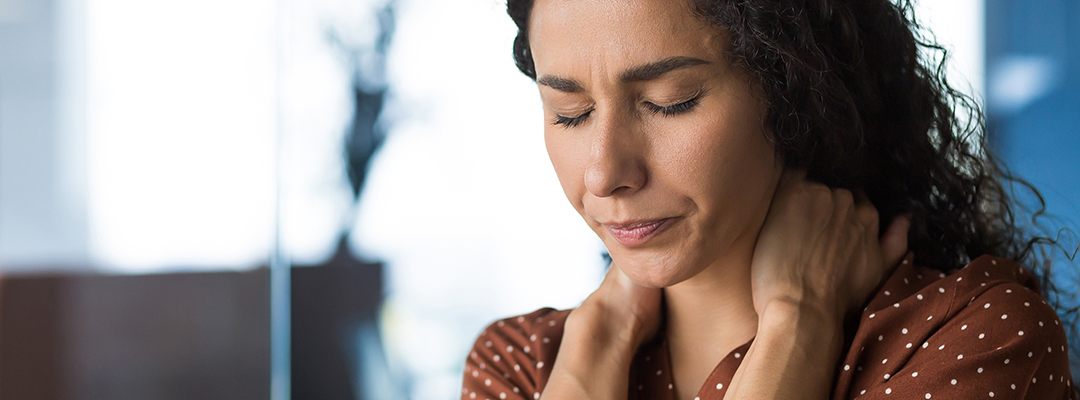
Musculoskeletal conditions, a top contributor to global disability according to the World Health Organization, are becoming an increasingly pressing concern worldwide. ¹
It is imperative to recognize that these conditions wield considerable influence over an individual’s capacity to navigate daily life, engage in routine activities, and uphold their overall physical vitality.
According to the World Health Organization (WHO), musculoskeletal conditions are the leading contributors to global disability, with low back pain alone being the predominant cause of disability in 160 countries.¹ The exponential growth in the prevalence of musculoskeletal conditions, driven by factors like population growth and aging, highlights their increasing importance on the global health landscape.¹
Addressing musculoskeletal conditions typically necessitates a multifaceted approach, encompassing medical interventions, physical therapy, tailored exercise regimens, pain management strategies, and adjustments to one’s lifestyle.
Check out this related article, Comparing Cost of LLLT to Other Treatments. We compare LLLT to other forms of treatment such as pharmaceutical and surgical treatments.
These strategies strive not only to alleviate symptoms but also to empower individuals to regain their mobility, enhance their quality of life, and mitigate the far-reaching consequences of musculoskeletal impairments.
However, one promising and trailblazing method has emerged in the form of Low-Level Light Therapy (LLLT). In this article, we’ll explore LLLT, a non-invasive, light-powered path to healing, and discover how this therapy is illuminating another way towards effective musculoskeletal condition management.
Defining Low Level Laser Therapy
At the core of LLLT is the laser. Laser itself is an acronym that stands for Light Amplification by Stimulated Emission of Radiation. They are unique sources of monochromatic, collimated, and coherent light, emitting precise and singular wavelengths that exhibit remarkable properties when harnessed for therapeutic purposes.
In the context of musculoskeletal health, LLLT moves to the forefront by channeling this extraordinary light into precisely targeted, non-invasive treatments tailored to address musculoskeletal conditions. It’s a gentle yet remarkably potent approach, notable for its distinctiveness among therapies, as it operates without generating heat, sound, or vibration.
Explore More LLLT Applications
LLLT’s Cellular Influence
Low-Level Laser Therapy (LLLT) exerts its cellular influence through the modulation of connective tissue cells, primarily fibroblasts, keratinocytes, endothelial cells, and lymphocytes, which all play a role in tissue regeneration.²
Utilizing wavelengths ranging from 660 nm to 905 nm, LLLT penetrates skin, soft tissues, and resilient structures, allowing it to deliver a profound impact on various musculoskeletal conditions.
According to a 2015 study², this deep-seated influence provides several key benefits:
- Pain Alleviation: LLLT effectively reduces pain associated with musculoskeletal issues.²
- Inflammation Control: It helps in mitigating inflammation, a common feature of such conditions.²
- Tissue Regeneration: LLLT expedites tissue renewal processes, aiding in the recovery and healing of damaged structures.²
The effectiveness in addressing these aspects makes it a valuable addition to the toolbox of healthcare providers, offering patients a safe and cost-effective approach to managing musculoskeletal pain and improving their overall quality of life.
Delineating LLLT and High Power Laser Therapy (HPLT)
Laser safety standards are of paramount importance in overseeing the wide-ranging applications of laser technology. These standards classify lasers into four general classes, each associated with established exposure limits known as Maximum Permissible Exposures (MPEs)3. Low-power lasers, like those utilized by Erchonia Corporation, belong to Class 2, indicating a minimal risk to human safety³.
LLLT, often informally referred to as “Cold Laser,” distinguishes itself by its unique capability to administer therapeutic laser treatment without generating noticeable heat during the procedure. This non-thermal characteristic is crucial for avoiding potential harm from the heating effects of laser radiation, especially given the human eye’s sensitivity to laser radiation in the retinal hazard region³. The importance of adhering to laser safety standards, such as those outlined in the ANSI Z136 Standards, cannot be overstated4.
Learn More About Laser Classifications
In contrast, High Power Laser Therapy (HPLT) is categorized as Class 4 lasers³. These lasers are characterized by their ability to generate surface warmth during treatment due to their higher power density³. It’s essential to exercise stringent safety precautions and adhere to laser safety guidelines when working with Class 4 lasers like HPLTs, given their potential for significant risks, including eye and skin exposure, tissue damage, and burns4.
The differentiation between LLLT and HPLT is pivotal in defining their therapeutic applications. LLLT, renowned for its non-thermal, low-power attributes, remains the preferred choice for targeted therapeutic benefits without the risks associated with thermal interactions.
LLLT’s Dynamic Musculoskeletal Impact
The potential multifaceted impact in musculoskeletal physiotherapy is vast, offering a diverse array of applications.
Physiotherapists routinely harness the power of LLLT to effectively manage a wide spectrum of musculoskeletal conditions, to promote healing and alleviate discomfort. Here are some common use cases:
- Knee, hip, and ankle osteoarthritis
- Rheumatoid arthritis
- Temporomandibular joint disorders (TMD)
- Shoulder impingement syndromes
- Hip or shoulder bursitis
- Low back disc degeneration
- Disc herniation
- Sciatica
- Neuropathic pain
- Tendonitis
- Tennis elbow
- Plantar fasciitis
- Lymphedema pain and volume reduction
In conclusion, as musculoskeletal conditions continue to cast a shadow on countless lives, the pursuit of effective and minimally invasive pain remedies remains paramount. While traditional therapies offer partial relief, the search for alternatives persists. Low Level Laser Therapy (LLLT) has emerged as a promising beacon of hope, with the potential to soothe inflammation, alleviate pain, and advance quality of life for individuals battling musculoskeletal issues.
Related Reading: Forecasting the Next 20 Years of Low-Light Laser Therapy in Medicine
References:
- World Health Organization. 2022. Musculoskeletal health. Retrieved from https://www.who.int/news-room/fact-sheets/detail/musculoskeletal-conditions
- Cotler, H. B., Chow, R. T., Hamblin, M. R., & Carroll, J. National Library of Medicine. 2015. The Use of Low Level Laser Therapy (LLLT) For Musculoskeletal Pain. Retrieved from https://www.ncbi.nlm.nih.gov/pmc/articles/PMC4743666/
- Erchonia. Laser Classification. Retrieved from https://www.erchonia.com/laser-classification/
- The Laser Institute of America (LIA). ANSI Z136 Standards. Retrieved from https://www.lia.org/resources/laser-safety-information/laser-safety-standards/ansi-z136-standards
Not All Light is the Same [Free eBook Download]
Discover the benefits of Low-Level Laser Therapy (3LT®) by Erchonia, a world leader in the field of 3LT® technology. Learn how 3LT® can help reduce the need for prescription opioids for chronic low back pain, the science behind 3LT® and the difference between visible lasers and infrared lasers.
How Erchonia Low Level Laser Therapy Works
The Power of Green Light Wavelength for Effective Body Fat Loss
7-Minute Read
In the realm of medical advancements, technology continues to revolutionize various aspects of healthcare, and body fat reduction is no exception. Erchonia’s Emerald laser stands out as a cutting-edge, FDA Market-Cleared technology designed to target stubborn fat and provide clients with an effective body fat loss treatment.
The non-invasive procedure presented here provides a host of unique benefits that distinguish it from alternative fat reduction approaches. Within this all-encompassing piece, we thoroughly explore the array of advantages offered by the green light wavelength low level laser technology showcased in Erchonia’s revolutionary Emerald laser.
Understanding the Emerald Laser and Its Functionality
The Emerald laser is a revolutionary treatment that effectively addresses overall body circumference and targets areas of stubborn fat. Its remarkable FDA market clearance for treating individuals with a BMI up to 40 makes it an inclusive and versatile option for a wide range of patients.
Unlike traditional fat reduction methods, the Emerald laser boasts the absence of bruising, swelling, freezing, or downtime. Clients can undergo treatments without disrupting their daily routines, making it a convenient choice for those seeking effective fat loss without significant lifestyle changes.
The results of the Emerald laser are nothing short of impressive, with an average circumference loss of 5.99 inches and visible changes often observed in as little as 2 weeks, instilling confidence in both patients and medical professionals.
How Green Light Wavelength Low Level Laser Technology Works
At the heart of the Emerald laser’s effectiveness lies Erchonia’s patented green low level laser technology. This innovative approach utilizes the power of green light wavelengths to emulsify adipose tissue, releasing it into the interstitial space.
- Gradual Fat Removal: Through the body’s natural processes, the fat is gradually removed through the lymphatic system. This gradual approach ensures safety and reduces the risk of complications, making it an attractive option for those seeking non-invasive fat reduction treatments.
- Preserving Fat Cells for Future Use: Unlike other fat reduction methods that permanently destroy fat cells, Emerald laser treatments empty the fat cells, preserving them for potential future use. This distinction is crucial in avoiding unintended consequences related to weight gain, offering patients long-term assurance of effective fat reduction.
- Minimal Downtime: The flexibility of this process enables patients to continue their daily activities immediately after treatment without any significant downtime, making the Emerald laser an appealing option for individuals with busy lifestyles.
Related: How Men and Women Store Fat Differently
The Distinction from Other Fat Reduction Methods
Comparing the Emerald laser to liposuction and cryolipolysis (fat freezing), we discover that it offers a non-destructive alternative. Unlike these invasive procedures, the Emerald laser does not pose the risk of damaging surrounding tissues or organs, providing an added layer of safety for patients.
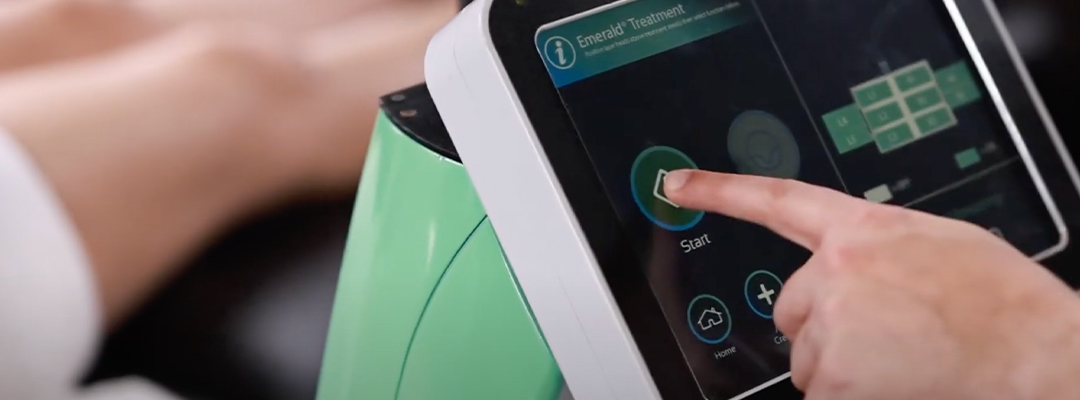
Emerald laser stands apart from liposuction and cryolipolysis, offering a non-destructive, organ-safe alternative for effective fat reduction.
The dangers of permanently destroying fat cells through other methods can lead to complications if the patient gains weight after treatment. Emerald laser treatments, on the other hand, maintain the potential for future fat storage, reducing the likelihood of fat accumulation elsewhere and promoting more balanced body contouring.
Benefits of Green Light Wavelength Low Level Laser Technology
As we delve into green light wavelength technology, its profound implications in body fat reduction come to light. It not only offers an effective path to fat reduction but also shifts our understanding of non-invasive fat loss.
The utilization of green light wavelength therapy represents a gentle and non-intrusive approach, creating a welcoming atmosphere that encourages patient dedication and reliable adherence. As a result, this approach facilitates enduring and successful reduction of body fat, a noteworthy advantage benefiting both the broader medical community and individuals seeking sustainable and health-conscious fat reduction innovations.
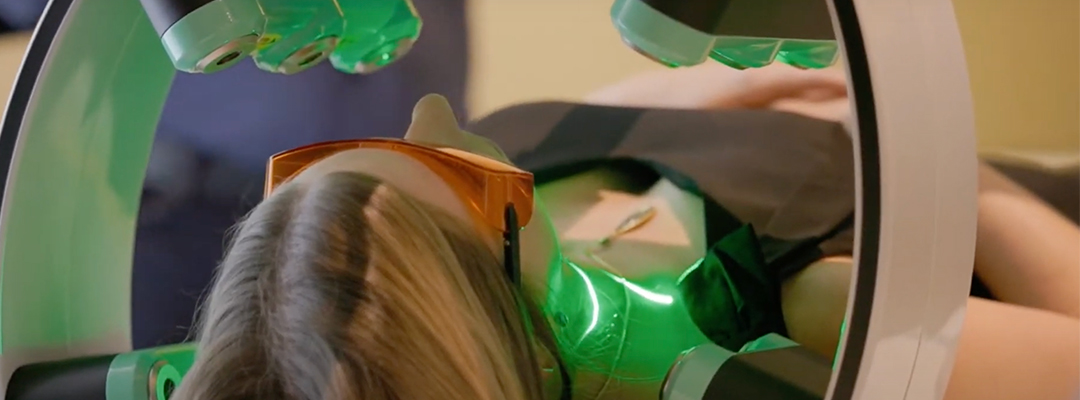
The Emerald laser offers a safe alternative to surgical procedures, reducing the risk of complications, and is an ideal option for those seeking non-invasive treatments.
Here’s more key benefits this technology can potentially provide:
- Safe and Non-Invasive Approach: The Emerald laser’s gentle approach removes the necessity for surgery, thus lowering the chances of complications. This makes it a fitting choice for those seeking an alternative to invasive treatments.
- Refined Precision: Enhances treatment effectiveness by addressing the unique needs of each patient, ultimately achieving the desired outcomes. By pinpointing stubborn fat deposits with exceptional precision, we deliver the results you’re aiming for.
- Minimal Downtime: Patients can resume daily activities immediately after treatment which sets it apart from other methods requiring downtime for recovery. Patients receive efficient and convenient fat reduction without interrupting routines.
- Effective and Quick Results: There is an impressive average circumference loss achieved with the Emerald laser and has the potential to provide quicker results.
- Reduction in Cellulite Appearance: The green wavelength low level laser technology not only targets body fat but also aids in the reduction of cellulite. Over time and with consistent treatments, this technology can smooth the skin’s appearance, creating a more refined aesthetic.
- Enhanced Mood and Energy: A lesser-known benefit of this technology is its potential impact on mood and energy levels. The process of releasing stored fat can also release endorphins, commonly known as “feel-good” hormones. This may result in the patient experiencing increased feelings of wellbeing and energy following treatments.
Advancing Patient Satisfaction and Business Growth
For medical and physician offices considering the integration of the Emerald laser into their practices, the reputation of delivering potent yet non-invasive fat reduction treatments positions medical offices as frontrunners, catering to the varied requirements of their clientele.
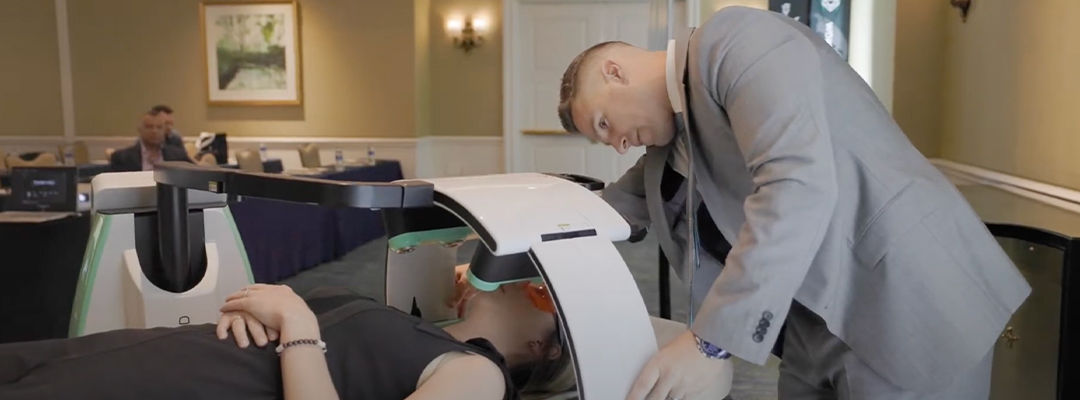
Introducing the Emerald laser treatment not only captivates potential patients but also fuels remarkable business expansion, establishing medical offices as leaders in powerful non-invasive fat reduction solutions tailored to diverse client needs.
The introduction of the Emerald laser into medical and physician offices represents a pivotal augmentation to their service repertoire, differentiating them from competitors and adeptly addressing the diverse prerequisites of their patients. As technological advancement continues unabated, exploring the potential of the Emerald laser in the realm of fat loss treatments presents a panorama of prospects and elevated patient outcomes, fundamentally transforming the landscape of body fat reduction and overall well-being.
In summation, the emergence of green light wavelength low level laser technology has redefined the domain of fat reduction treatments, offering a secure, efficacious, and non-disruptive avenue for individuals aspiring to reshape their physique and amplify their self-assurance. With the Emerald laser leading this transformative journey, the future of fat reduction treatments shines brighter than ever before.
Related: How to Choose Low Level Laser Therapy Devices for Your Practice
Not All Light is the Same [Free eBook Download]
Discover the benefits of Low-Level Laser Therapy (3LT®) by Erchonia, a world leader in the field of 3LT® technology. Learn how 3LT® can help reduce the need for prescription opioids for chronic low back pain, the science behind 3LT® and the difference between visible lasers and infrared lasers.
How Erchonia Low Level Laser Therapy Works
How to Choose Low Level Laser Therapy Devices for Your Practice
8-Minute Read
Low-Level Laser Therapy (LLLT) is gaining popularity in medical practices due to its non-invasive nature and potential therapeutic benefits. These devices utilize low-intensity lasers or light-emitting diodes to stimulate cellular function and promote healing. If you’re considering incorporating LLLT into your practice, it’s crucial to choose the right device to ensure optimal treatment outcomes.
In this article, we will explore the types of low-level laser therapy devices available and provide guidance on selecting the most suitable device for your practice.
Types of Low-Level Laser Therapy Devices and Their Differences

LLLT devices are available in both handheld and stationary forms, offering flexibility for targeted treatment on specific areas with handheld devices, while stationary devices are designed for larger treatment areas or multiple patients at once.
When it comes to LLLT devices, there are several important distinctions to consider. Understanding these differences will help you make an informed decision.
- Class 3 vs. Class 4 laser devices: LLLT devices are classified based on their power output. Class 3 lasers deliver low-level power, typically below 500 milliwatts, while Class 4 lasers have higher power outputs. Class 4 lasers can penetrate deeper into tissues and may offer faster treatment times but require additional safety precautions due to their higher power.
- Handheld vs. stationary devices: LLLT devices come in both handheld and stationary forms. Handheld devices provide flexibility and ease of use, allowing for targeted treatment on specific areas. Stationary devices, on the other hand, are designed for larger treatment areas or multiple patients simultaneously.
- Continuous wave vs. pulsed devices: Continuous wave devices emit a steady stream of laser light, while pulsed devices emit laser light in short bursts. Pulsed devices may offer advantages in certain applications, such as pain management and wound healing.
Related Reading: Laser Classification
Considerations for Selecting the Most Suitable Device
Before choosing an LLLT device for your practice, it is essential to carefully assess several factors:
Assessing Your Practice’s Needs and Patient Demographics
To find the ideal device, you should prioritize selecting the one that best meets the specific needs of your patients. By doing so, you can provide the most efficient and effective care, which fosters trust and encourages them to return for future needed treatments.
- Understanding Practice Needs: Identify the specific needs and objectives of your practice. Analyze the range of treatments you offer and the conditions you aim to address with LLLT.
- Patient Demographics: Analyze the demographics of your patient population. Consider factors such as age, medical history, and prevalent conditions to ensure the device aligns with their requirements.
- Target Treatment Areas: Determine the areas of the body you intend to target with LLLT. Different devices may excel in treating certain regions more effectively than others.
Related: Comparing Cost of LLLT to other Treatments
Evaluating User-Friendliness and Compatibility
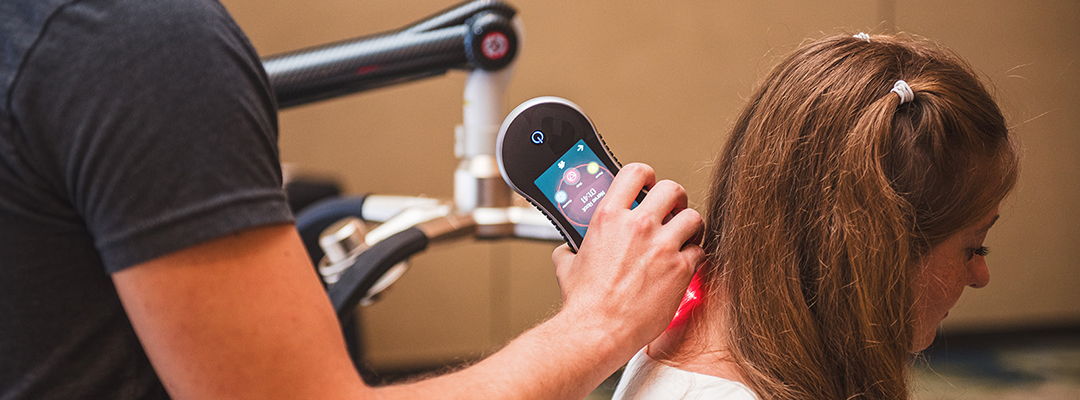
Choose devices with customizable treatment protocols, allowing personalized adjustments to cater to individual patient needs and diverse medical conditions.
To achieve smooth integration of the LLLT device into your practice, consider the following user-friendliness and compatibility aspects:
- Ease of Use and Ergonomic Features: Choose a device that is easy to handle and maneuver during treatments. Ergonomic features can enhance comfort for both practitioners and patients, leading to better treatment experiences.
- Interface and Controls: Look for a well-designed interface with intuitive controls. User-friendly controls simplify device operation and allow for efficient treatment sessions.
- Customizable Treatment Protocols: Opt for devices that offer customizable treatment protocols. This feature enables tailoring treatments to meet individual patient needs and varying medical conditions.
- Integration with Existing Practice Management Systems: If your practice already uses management systems, consider whether the LLLT device can integrate with them. Integration streamlines patient records and enhances overall practice efficiency.
Technical Support and Training
For a smooth integration of the LLLT device into your practice, it’s important to prioritize comprehensive technical support and training. Make sure to check if the manufacturer provides robust technical support, addressing any device-related issues promptly.
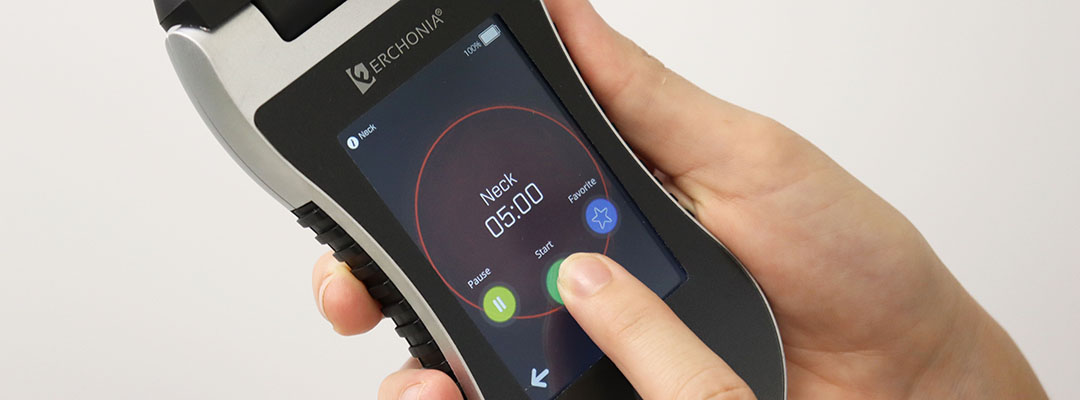
To ensure seamless integration of the LLLT device into your practice, prioritize comprehensive technical support and training, and verify if the manufacturer offers prompt resolution of any device-related issues.
In addition, consider looking for training opportunities provided by the manufacturer to ensure you and your staff can operate the LLLT device effectively. By taking these factors into account, you’ll be well-informed to make the best decision and choose the LLLT device that suits your practice’s needs, ensuring optimal care for your patients.
Comparison of Therapeutic Applications and Effectiveness
Different LLLT devices have varying therapeutic applications and effectiveness. Consider the specific treatments you plan to offer in your practice and choose a device that aligns with those needs.
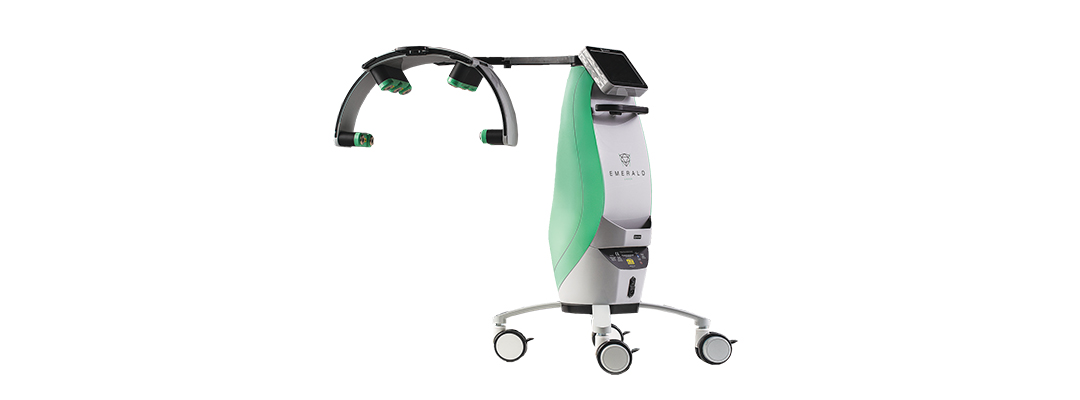
Introducing Erchonia’s Emerald Laser, an FDA Market-Cleared full-body fat loss treatment targeting stubborn fat areas with cold laser technology, treating overall body circumference and approved for clients with a BMI up to 40.
For example, Erchonia offers a range of LLLT devices for various applications, including:
- Foot Fungus Lasers: Designed specifically for treating foot fungus, these devices provide targeted therapy for this common condition.
- Lasers for Fat Loss: These devices aim to assist in fat reduction treatments, helping patients achieve their body contouring goals.
- Lasers for Pain: LLLT devices used for pain management and relief can be beneficial for conditions such as arthritis, muscle strains, and joint pain.
- Radiation Reducer: This product, aimed at reducing exposure to cell phone radiation, addresses a growing concern in our technology-driven world.
- Therapeutic Stands & Accessories: Stands and accessories enhance the use of LLLT devices, improving patient comfort and treatment precision.
- Veterinary LLLT Devices: Erchonia also offers laser systems designed specifically for veterinary applications, expanding the potential of LLLT in animal healthcare.
At Erchonia, we take pride in offering a wide range of LLLT devices with unique features and applications, making us a reputable provider to consider. If you want to learn more about our products and find the most suitable LLLT device for your practice, don’t hesitate to reach out to us for further information. We’re here to assist you in making an informed decision and ensuring seamless integration of our LLLT device into your practice, ultimately delivering optimal care to your patients.
Not All Light is the Same [Free eBook Download]
Discover the benefits of Low-Level Laser Therapy (3LT®) by Erchonia, a world leader in the field of 3LT® technology. Learn how 3LT® can help reduce the need for prescription opioids for chronic low back pain, the science behind 3LT® and the difference between visible lasers and infrared lasers.
Related: LLLT Safety: Guidelines for Minimizing Risks and Side Effects
How Erchonia Low Level Laser Therapy Works
LLLT Safety: Guidelines for Minimizing Risks and Side Effects
6-Minute Read
Low level light therapy (LLLT), renowned for its non-invasive approach and potential therapeutic benefits, has garnered substantial popularity as a treatment option for a diverse array of conditions.
However, as the use of LLLT continues to increase, it is paramount to prioritize laser safety and minimize potential risks and side effects associated with this form of therapy. Laser safety guidelines play a vital role in ensuring the well-being of both practitioners and patients. By implementing the following key laser safety guidelines, healthcare professionals can provide LLLT treatments with confidence and minimize potential risks.
In this article we’ll discuss some best practices when it comes to LLLT safety including how to implement these key tips:
- Use laser devices that meet FDA safety standards and demonstrate effectiveness.
- Reduce laser exposure by employing proper protective gear and adhering to institutional safety protocols.
- Educate yourself and others about laser hazards to reduce risks.
Each of these three essential best practices serves as a foundation, with numerous underlying aspects that are worth exploring. Let’s delve into the fundamentals and explore guidelines that can promote the seamless and secure implementation of this new technology.
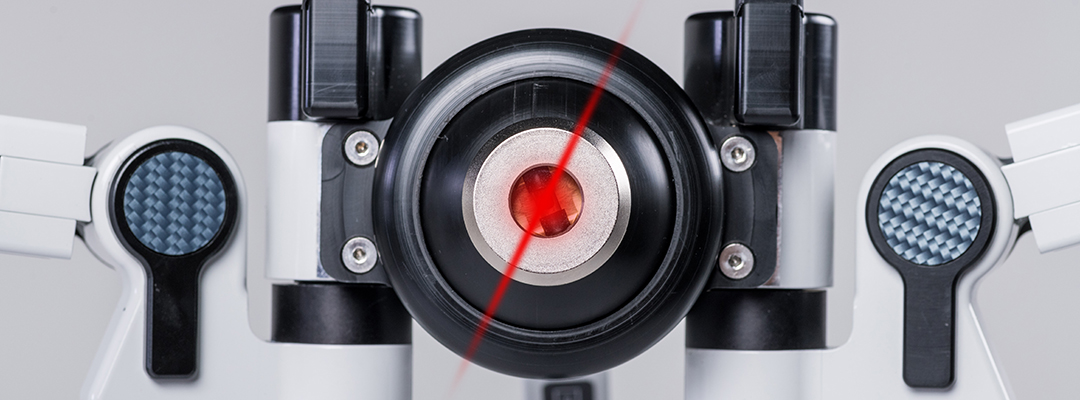
Follow FDA Safety Standards
The U.S. Food and Drug Administration (FDA) is responsible for regulating medical devices, including lasers, to ensure their safety and effectiveness. It is important to use laser devices that meet FDA safety standards, as this will help minimize risks and potential side effects such as burns or eye damage. Healthcare professionals should be familiar with FDA regulations and take the necessary steps to ensure that their laser devices meet all safety requirements.
Here are the key fundamentals to be aware of:
- Laser devices must be labeled and registered with the FDA before they can be used for treatment.
- Healthcare providers should receive adequate training on how to safely operate LLLT devices and handle laser hazards.
- Manufacturers are required to provide instructions about the proper use of their laser products, including information about power settings, exposure times, and safety protocols.
- During treatment, patients should wear protective eyewear designed specifically for laser therapy in order to reduce the risk of eye injuries.
- Doctors must document any adverse reactions or side effects that may occur during or after an LLLT session.
- The FDA recommends that treatments are administered by a trained professional who is familiar with the potential risks associated with LLLT.
- Medical practitioners should be aware of all applicable safety standards and regulations related to LLLT devices when using them in a clinical setting.
Practitioners and medical offices utilizing LLLT must prioritize and strictly adhere to standard FDA requirements and guidelines. A crucial aspect is minimizing unnecessary laser exposure through the use of suitable protective equipment and adherence to institutional safety protocols. Let’s now explore the topic of laser exposure safety in greater depth.
Related Reading: How Men and Women Store Fat Differently
Prioritize Laser Exposure Safety
LLLT can be effective in treating a wide variety of conditions, however it is important to remember that laser exposure may also carry risks. It is essential for practitioners and patients alike to practice safety procedures and limit unnecessary laser exposure during treatment sessions.
Healthcare professionals should be aware of the potential risks associated with LLLT including:
- Burns
- Eye damage
- Skin irritation or discoloration
- Tissue damage from excessive heat build-up
- Damage to internal organs due to prolonged exposure
To minimize potential side effects, healthcare providers should consistently wear protective eyewear during treatments and strictly adhere to institutional safety protocols when operating laser devices. Patients should also be provided with appropriate eye protection during any LLLT session.
Related: Cold Laser Therapy for Neck & Shoulder Pain
Moreover, ensuring adequate airflow in the treatment area is essential to avoid excessive accumulation of heat and reduce the potential for tissue harm.
Practitioners should prioritize educating themselves and others about laser safety guidelines and remain updated on any changes or new regulations concerning LLLT. Acquiring knowledge about laser hazards is vital for mitigating risks and staying well-informed. This proactive approach ensures practitioners are well-prepared to handle laser-related challenges effectively.
Promote LLLT Safety in Your Medical Office
Ensuring the safety of your patients and promoting awareness about laser hazards is essential in a medical office utilizing LLLT.
Here are valuable strategies to educate patients and the public on LLLT safety:
- Provide comprehensive information to patients: When discussing LLLT with patients, focus on highlighting the benefits and minimal side effects of this treatment when used correctly. Stress the importance of adhering to safety protocols to minimize risks.
- Utilize a combination of communication methods: To reach a wider audience, employ both traditional and digital communication channels. Consider using television and print media to disseminate information about LLLT safety. Additionally, develop informative websites that educate patients on the subject. Conducting seminars and workshops can also be effective in raising awareness. Emphasize the significance of following safety protocols during these communication efforts.
- Refer to reputable educational materials and campaigns: Take advantage of established guidelines, resources, and sample videos provided by reputable organizations like the American Society for Laser Medicine and Surgery (ASLMS), the Laser Institute of America (LIA), and the American Society of Lasers in Medicine and Surgery (ASLMS). These resources can serve as valuable tools to educate patients and the public about LLLT safety.
- Tailor educational materials and campaigns: Adapt your educational materials and campaigns to suit specific areas of expertise within your medical office. By tailoring the information to the patient’s condition or treatment, you can enhance their understanding and engagement. This personalized approach can contribute to a safer LLLT experience.
Related Reading: How to Market Laser Therapy
Foster a Foundation of Knowledge and Safety
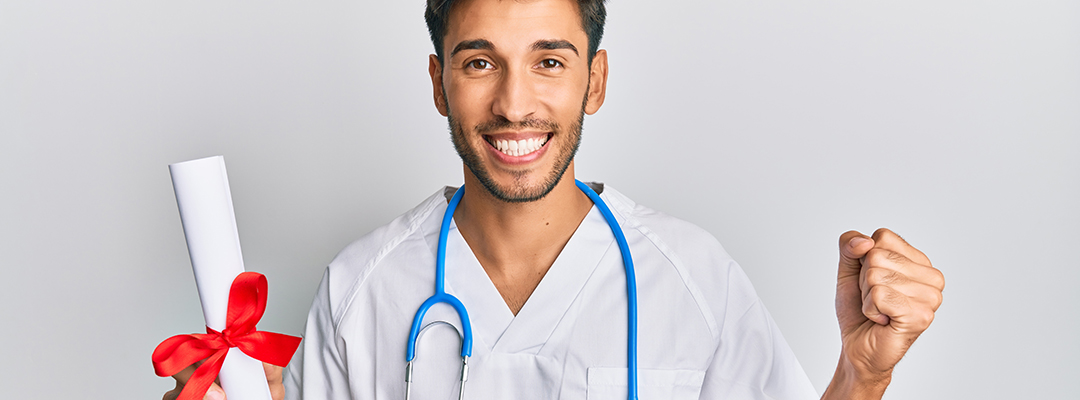
Through the implementation of these strategies, organizations can proactively promote the safety of Low-Level Laser Therapy (LLLT) and enhance awareness among patients and the general public regarding its advantages and precautions. By fostering a solid foundation of knowledge and emphasizing strict adherence to safety protocols, organizations can cultivate an environment that prioritizes safety and maximizes the effectiveness of LLLT practices, resulting in a more secure and successful implementation of this therapeutic approach.
With a strong foundation of knowledge and a commitment to safety, LLLT can be effectively and securely integrated into medical practices, providing patients with a safer therapeutic experience.
Not All Light is the Same [Free eBook Download]
Discover the benefits of Low-Level Laser Therapy (3LT®) by Erchonia, a world leader in the field of 3LT® technology. Learn how 3LT® can help reduce the need for prescription opioids for chronic low back pain, the science behind 3LT® and the difference between visible lasers and infrared lasers.
Related: Comparing Cost of LLLT to other Treatments
How Erchonia Low Level Laser Therapy Works
Comparing Cost of LLLT to other Treatments
9-Minute Read
Are you a healthcare professional seeking to enhance your medical practice with an innovative and patient-friendly therapeutic approach? Do you find yourself weary of the burdensome costs and invasiveness often associated with conventional medical treatments, along with the extensive list of accompanying side effects?
Imagine incorporating a breakthrough therapy that not only proves remarkably cost-effective, but also stands as a non-invasive and painless alternative to pharmaceuticals and surgical interventions, as well as other common forms of treatment that we will discuss throughout this article.
Welcome to the world of Low-Level Laser Therapy (LLLT). This revolutionary treatment holds the potential to transform your medical practice and redefine patient care standards.
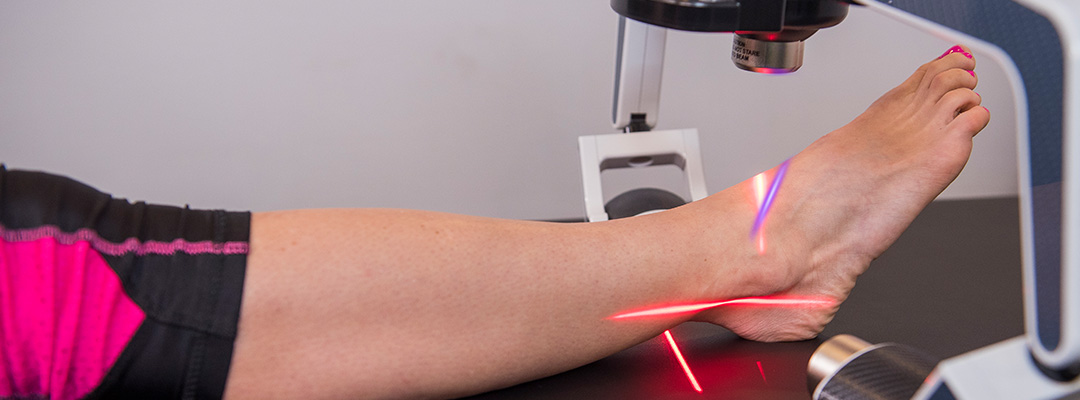
By utilizing the capabilities of low-intensity lasers, LLLT taps into the body’s innate healing mechanisms, activating tissue regeneration and fostering holistic wellness.
LLLT harnesses the power of low-intensity lasers to stimulate the body’s natural healing processes. It has potential to promote tissue regeneration and enhance overall well-being. The remarkable potential of LLLT lies in its ability to provide safe and effective relief from pain and discomfort. A great benefit is it is also without the risks and inconveniences commonly associated with other treatments.
As medical professionals, it is important to shape a future of medicine that is not only more effective, but also cost-effective. By embracing LLLT, we can unlock the significant advantages it offers in terms of both patient outcomes and financial considerations. This therapy has the potential to revolutionize our approach to healing and improve the well-being of our patients.
LLLT in Comparison to Other Treatments
In today’s healthcare landscape, cost-effective treatment options hold significant importance. Low-Level Laser Therapy (LLLT) has emerged as a promising and economically viable alternative for medical practices in some cases.
Related: Cold Laser Therapy for Neck & Shoulder Pain
By comparing LLLT to various treatment options such as pharmaceutical treatments, surgical procedures, physiotherapy, massage therapy, acupuncture, and cryotherapy, we can gain insights into its cost-effectiveness and how it outperforms or complements existing approaches.
Pharmaceutical Treatments
Low-level laser therapy offers doctors a more cost-effective approach compared to pharmaceuticals, firstly, because it reduces medication expenses. It can serve as an alternative to expensive pharmaceutical drugs. This can lead to significant cost savings in terms of medication procurement and inventory management. Additionally, LLLT requires lower administration costs, as trained staff can perform the therapy under the supervision of doctors, allowing physicians to allocate their time to other essential medical tasks.
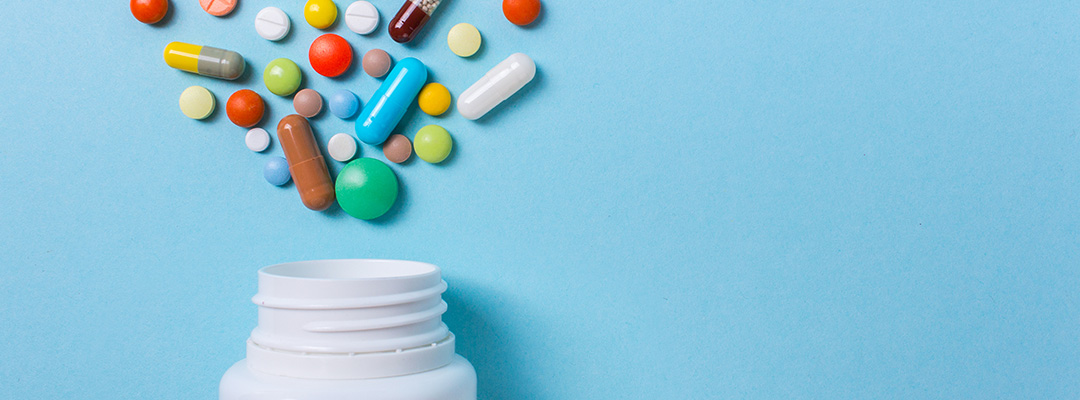
LLLT is a cost-effective alternative to pharmaceuticals for doctors as it reduces medication expenses and administration costs, allowing physicians to allocate time to other tasks.
LLLT offers doctors a cost-effective treatment option with a lower risk of adverse events compared to pharmaceuticals. By incorporating LLLT into their practice, doctors can increase patient throughput through shorter sessions and potentially reduce the need for prolonged pharmaceutical treatments or surgeries. This is the path to long-term cost savings. The approach enhances patient outcomes while optimizing resource allocation.
Surgical Treatments
Low-level laser therapy (LLLT) provides doctors with a cost-effective alternative to surgical treatments. By opting for LLLT, doctors can avoid the high expenses associated with surgical interventions, including operating rooms, anesthesia, and post-operative care. LLLT also carries a lower risk of complications, reducing expenses related to managing complications and providing follow-up care.
Related: Why You Should Use Low-Level Lasers for Chronic Pain at Your Practice
With shorter sessions and fewer resources required, LLLT enables doctors to efficiently treat more patients.
Additionally, LLLT eliminates the costs associated with hospital stays and post-operative rehabilitation, leading to long-term cost savings. By incorporating LLLT into their practice, doctors can deliver cost-effective care while minimizing the financial burdens associated with surgical treatments.
Physiotherapy
LLLT eliminates the need for expensive and time-consuming manual therapy and reduces the costs associated with manual therapy equipment. With shorter treatment sessions and fewer resources required, LLLT enables doctors to efficiently treat more patients within a given timeframe.
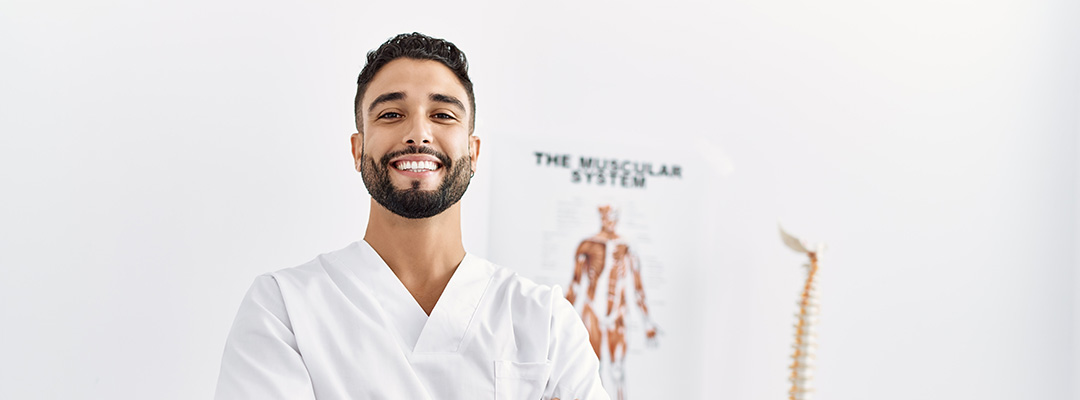
Physiotherapists can efficiently treat more patients with the shorter treatment times LLLT provides.
By incorporating LLLT into their practice, doctors can provide cost-effective care while optimizing resource allocation and enhancing patient outcomes.
Acupuncture
Low-level laser therapy (LLLT) can be a more cost-effective option for doctors compared to acupuncture for several reasons. By eliminating the need for needle insertion, LLLT reduces the expenses associated with acupuncture needles and related supplies. LLLT also requires less time and resources than lengthy acupuncture treatments. Doctors can treat more patients within a given timeframe (a common advantage LLLT presents over other forms of treatment).
Related: How Laser Therapy Helps Athletes Physically and Mentally
Additionally, LLLT offers a standardized treatment approach, ensuring consistency and potentially reducing variability in treatment costs. It can also be performed by trained staff under the supervision of doctors. This allows physicians to allocate their time to other essential medical tasks reducing labor costs.
Cryotherapy
Low-level laser therapy (LLLT) offers doctors a more targeted and efficient treatment approach compared to cryotherapy. By providing specific relief to targeted areas of the body, LLLT reduces the need for extensive treatments for widespread pain management. This targeted approach not only accelerates recovery time but also allows for shorter patient treatment durations, creating more bandwidth for medical practitioners to attend to other important tasks.
LLLT is a popular option for individuals seeking an effective way to manage excess fat storage without invasive procedures. By understanding the complex processes of how the body stores and metabolizes fat, individuals can make informed decisions about their health and consider LLLT as a viable option for managing unwanted body composition changes. With the help of healthcare professionals, patients can achieve their desired body composition and improve their overall health and well-being.
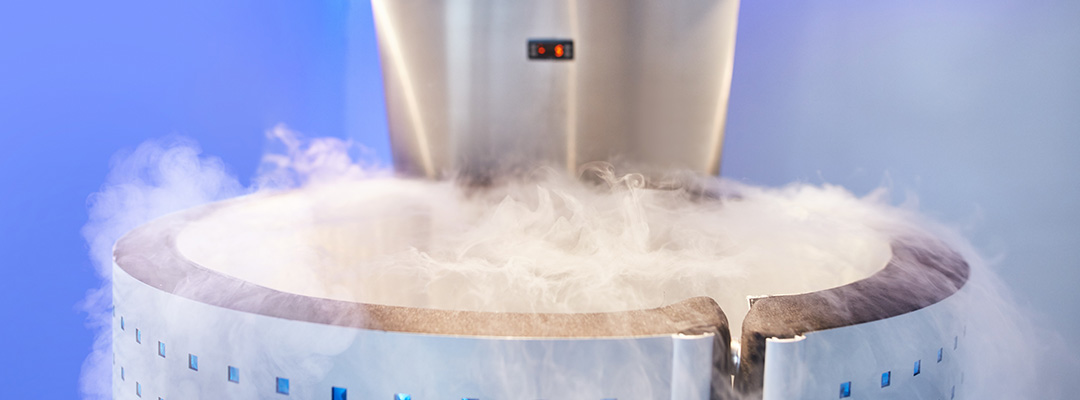
LLLT’s targeted relief to specific areas of the body reduces the need for extensive treatments, accelerates recovery, and frees up medical practitioners for other important tasks.
LLLT’s speed and precision in targeted recovery are indeed significant factors, but its benefits extend further to encompass flexibility and seamless integration into medical practices. Incorporating LLLT does not require significant investment or overhead costs. Doctors can easily merge this therapy into their existing practice without major disruptions or financial costs.
Patient Outcomes is Priority
Low Level Laser Therapy (LLLT) is recognized as an effective therapy for a wide range of symptoms, including back pain and plantar fasciitis. The cost-effectiveness of LLLT compared to other treatments has been well-documented. However, it is important to note that medical professionals do not discourage the use of multiple therapies simultaneously. The primary goal is to provide optimal care for patients. If that involves incorporating various treatments, it is encouraged.
Each patient is unique, and their treatment plan should be tailored to their individual needs and responses. By integrating LLLT alongside other therapies, healthcare providers can maximize the potential benefits and deliver comprehensive care.
Not All Light is the Same [Free eBook Download]
Discover the benefits of Low-Level Laser Therapy (3LT®) by Erchonia, a world leader in the field of 3LT® technology. Learn how 3LT® can help reduce the need for prescription opioids for chronic low back pain, the science behind 3LT® and the difference between visible lasers and infrared lasers.
Related: Red Light Therapy: Dispelling Laser Myths with Basic Photochemistry
Sources:
https://pubmed.ncbi.nlm.nih.gov/20393809/
